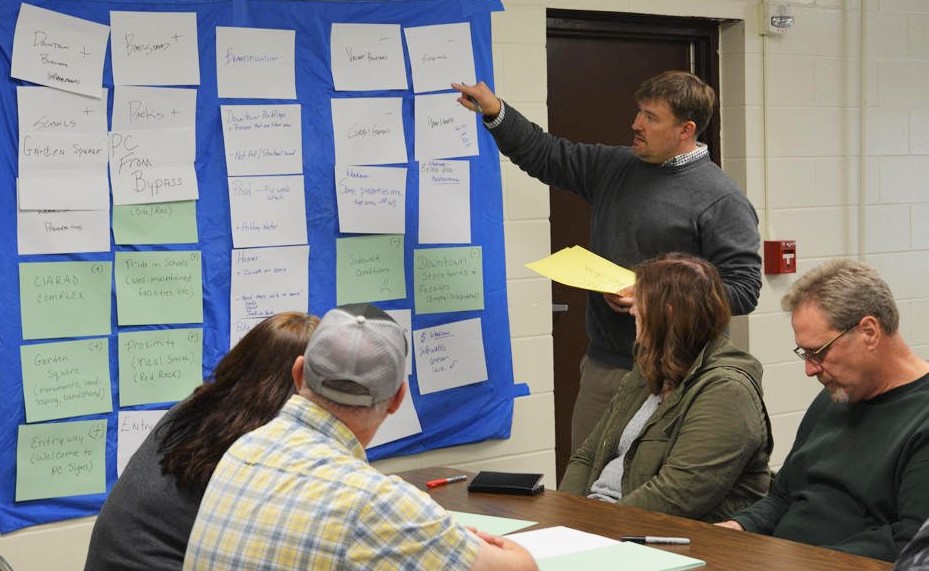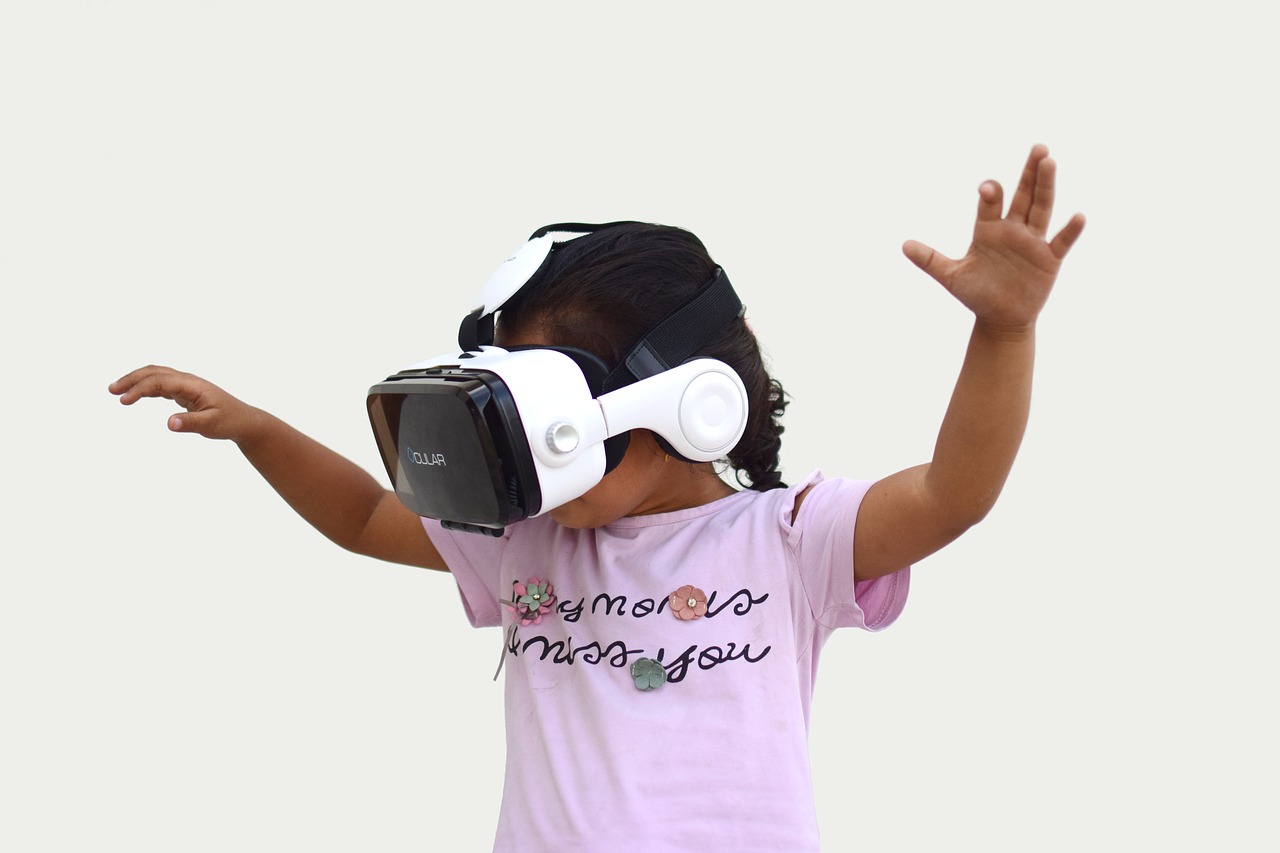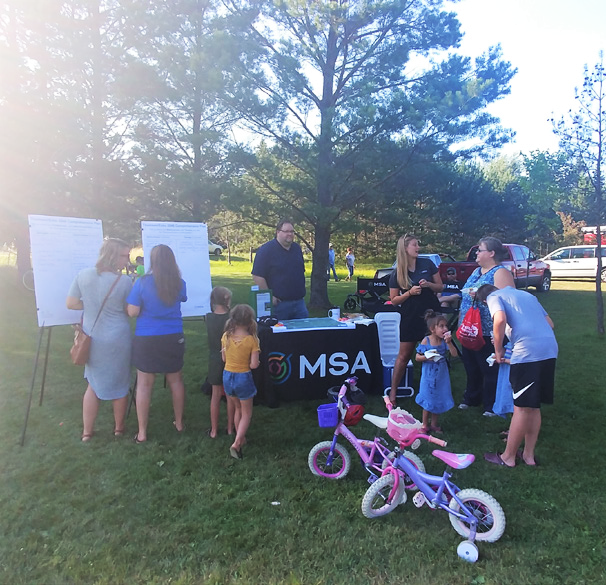A community of voices
Public engagement, public participation, civic involvement, public outreach, public input. Whatever you call it, it is one of the single most effective tools that can be employed to actively and effectively include the citizenry in the decision-making process. Whether for municipal infrastructure projects, new community assets or the creation of long-term visionary or comprehensive plans, including a deep and diverse pool of voices will lead to a more successful project, and ultimately, a stronger community. All projects can benefit from a strong, strategic public engagement process.
Who should be included in this process? The short answer: as many as are willing. Comprehensive engagement is pivotal to the creation of an overall comprehensive plan and it means reaching out to all interested and affected individuals, organizations, agencies and government entities. You also need to intentionally and diligently request input from people of all ages, abilities, ethnicities, socioeconomic backgrounds, political ideologies and so-on.

Photo credit to James A. Pierson, PCM Explorer
Adjusting your approach
Gathering feedback from the widest possible spectrum of generations can pose its own set of challenges. The first step is knowing who it is you are speaking with. This determines how you best approach subjects and decides the techniques you will use to obtain genuine feedback.
The analysis of generational preferences below is not intended to make generalizations about individuals, but rather to focus on the trends and experiences of particular cohorts that are based on research. This is intended to help guide decisions and actions when seeking public engagement across the spectrum of generations.
Who are some of the generations we might see at a public meeting?
While the span of years per each generation varies slightly, the most commonly agreed-upon ranges are as follows:

Traditionalists

What is important to the Traditionalist Generation?
Some of the major events that helped form the values and thought patterns of Traditionalists are: The Great Depression, World War II, The Atomic Bomb, The Cold War, a shifting culture and rising social consciousness. The general attitude toward community engagement is a sense of giving something back, great loyalty to institutions they love, lesser importance placed on quid pro quo and a greater belief placed on philanthropy and community.
How do we best engage Traditionalists?
Social media is not a good format to engage this generation, but mailed surveys and questionnaires are good ways to get feedback. They like to see the impact of their efforts. They have time and money and are willing to voice opinions and experiences on what you are proposing. Good ways to reach this generation are through mailers and invites to traditional meetings or stakeholder/focus groups.
Baby Boomers

What is important to the Baby Boomer Generation?
Baby Boomers have lived through the Vietnam War, the Women’s Movement, the Civil Rights Movement, putting a man on the moon and Watergate. They want to know why they should be involved, but are optimistic. They want to contribute to a specific process that will do concrete good.
How do we engage Baby Boomers?
Boomers want to make a difference and have an impact. They like to participate to express their beliefs, so don’t be afraid to let them. They want to share their knowledge, time and money towards implementation, but you must convince them nothing is being wasted. This generation is more tech savvy than you might realize.
Gen Xers

What is important to Generation X?
Generation Xers have grown up seeing a huge development of computers and technology. They experienced the explosion of the Challenger space shuttle, the end of the Cold War, the economic boom and have been most impacted by the Boomer Generation. They are skeptical and will probably be more prone to utilize technology than prior generations. They are short on time and seeking short, meaningful commitments.
How do we engage Generation X?
Generation X participants benefit from flexible options for input and engagement. They like to see their input tied to their personal connections within the community. Encourage a balance between self and community and be transparent and concise.
Millennials

What is important to Millennials?
Millennials have experienced terrorism at home such as the Oklahoma City Bombing and the attacks on September 11, 2001. They have witnessed the collapse of the dot-com era and major examples of corporate greed such as the Enron scandal. They have grown up with social media and are the first generation to have an online identity. They are generous with time and passionate about community, engage where they will see an impact, are technology driven, seek instant gratification and rely on peers and trusted relationships for information.
How do we engage Millennials?
Be creative. Millennials are very tech savvy and enjoy using technology. They want to be involved but need to see how society and the greater community will be impacted. They are very receptive to online meetings and engagement. Meetings focused on specific topics or breakout sessions within meetings are a good way to engage this cohort.
What generation is coming after Millennials?
Generation Z

Generation Z is quickly becoming the favored name for this next generation, though other nicknames include NextGen, Centennials and Homelanders.
What do we know about Generation Z that will impact future community engagement?
They are raised by Generation X parents, which could make their outlook fall under a more realistic mindset. They will enter the workforce in the 2020s, an age when technology is not new or novel but still a major part of their lives. They represent about 19 percent of the current overall population and are more diverse than any previous generation. Engaging with this populous will likely include utilizing all components of digital technology at your disposal and connecting the dots across whatever mediums next come to market. Being fluid, adaptable, and willing to learn new technologies and social norms will allow you to connect with this next generation most successfully.
Robust engagement for success

In conclusion, engaging in robust and diverse dialogue while planning a public project is pivotal to the success of the endeavor. It creates bridges, builds trust and ensures that final projects truly do reflect the community’s vision for its future. There are numerous methods for gathering feedback, all of which can easily be catered to any age group or demographic. Public meetings, open houses, surveys, interviews, focus groups, community walkabouts, idea boards, web and social media polls. It’s vital to not only span the gamut of generations, but to also pull from a variety of sources including non-profit organizations, public officials, disabled individuals and those that have been traditionally under-served.
When we seek input purposefully and thoughtfully from as broad of a group of citizens as possible, we set our projects up for success. More importantly, we set communities up for success—and that is the ultimate goal.
(Note: This content originally appeared in the September, 2018, issue of Cityscape, a magazine produced by the Iowa League of Cities )
